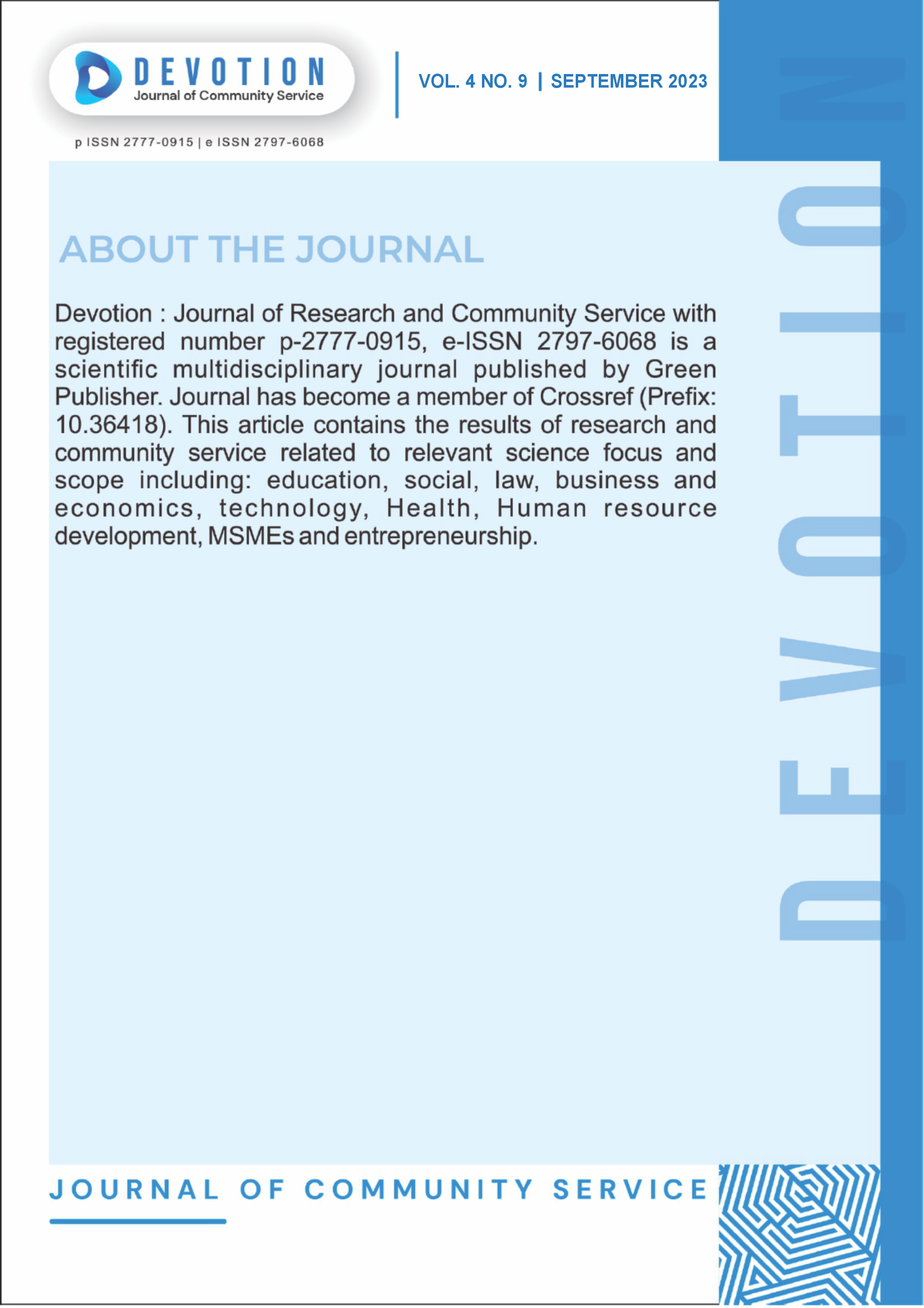The Effect of Packaging Use on the Quality of Salak Pondoh (Salacca edulis Reinw.)
DOI:
https://doi.org/10.59188/devotion.v4i9.569Keywords:
Salak pondoh (Salacca edulis Reinw.), Low Density Polyethylene (LDPE), carton boxAbstract
The demand for salak pondoh is increasing along with the increase in economic growth and population. Efforts to maintain the quality of salak pondoh fruit are to delay ripeness using various types of packaging and knowing the most effective type of packaging to extend the shelf life of salak fruit. The research was carried out at the Agricultural Product Processing Technology Laboratorium, Faculty of Agriculture, Universitas Swadaya Gunung Jati. The study design used Complete Randomized Design (RAL) with TK treatment = no packaging, P = Low Density Polyethylene (LDPE) plastic packaging and K = carton box packaging, each treatment was repeated as many times 9 times. The parameters observed were percentage of weight loss, hardness, total dissolved solids and vitamin C levels. The data obtained were analyzed with Analysis of Variance (ANOVA) and if the difference was real continued with the Scott-Knott test at the level of significance of 5%. The results showed that the use of cardboard box packaging material was able to delay the ripeness of salak fruit. Low density polyethylene plastic is a type of packaging that is effective in reducing the weight loss and hardness of salak fruit, and cardboard boxes are a type of packaging that effective in suppressing total dissolved solids and vitamin C levels of salak pondoh fruit (Salacca edulis Reinw.).
Published
Issue
Section
License
Copyright (c) 2023 Soni Muhammad Luthfy, Farhan Yanuar Abdillah, Endah Nurhayati, Luthenia Nur Azizah, Dodi Budirokhman

This work is licensed under a Creative Commons Attribution-ShareAlike 4.0 International License.
Authors who publish with this journal agree to the following terms:
- Authors retain copyright and grant the journal right of first publication with the work simultaneously licensed under a Creative Commons Attribution-ShareAlike 4.0 International. that allows others to share the work with an acknowledgement of the work's authorship and initial publication in this journal.
- Authors are able to enter into separate, additional contractual arrangements for the non-exclusive distribution of the journal's published version of the work (e.g., post it to an institutional repository or publish it in a book), with an acknowledgement of its initial publication in this journal.
- Authors are permitted and encouraged to post their work online (e.g., in institutional repositories or on their website) prior to and during the submission process, as it can lead to productive exchanges, as well as earlier and greater citation of published work.













